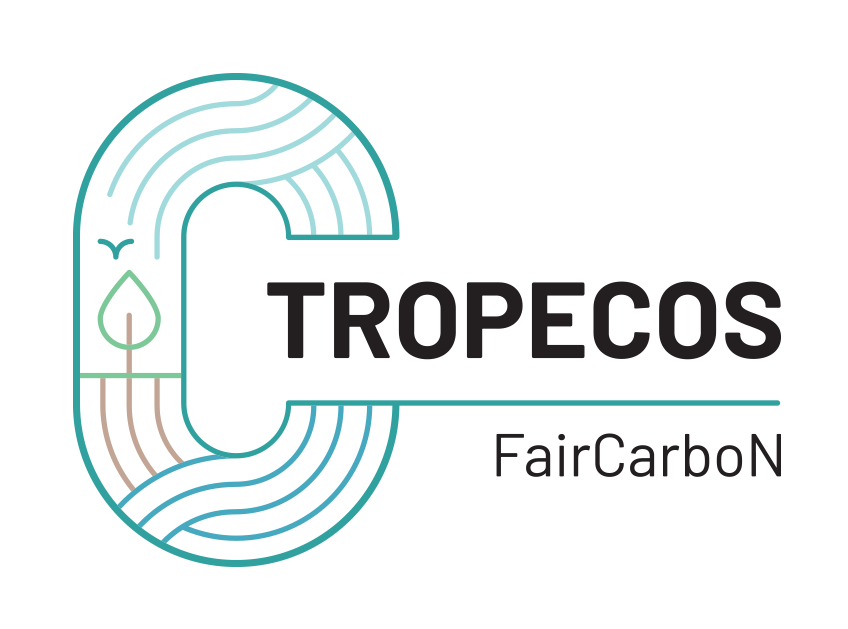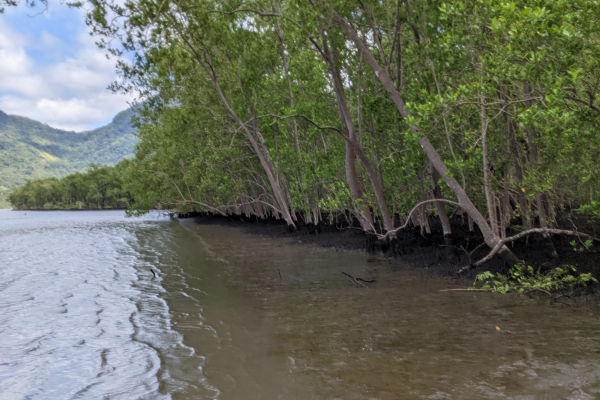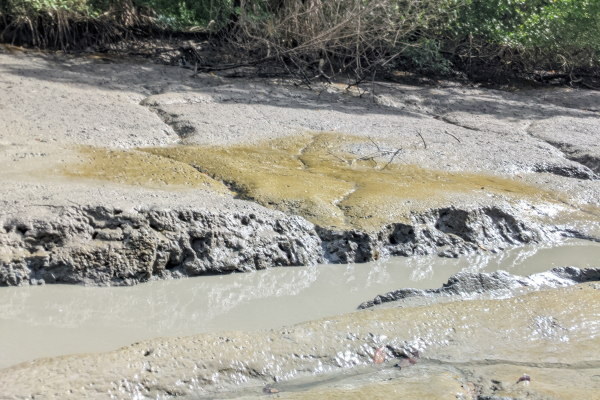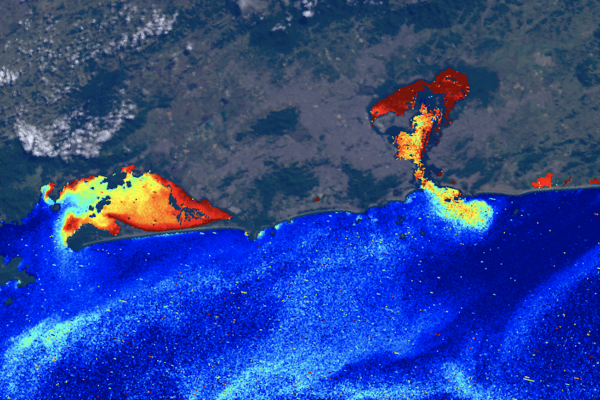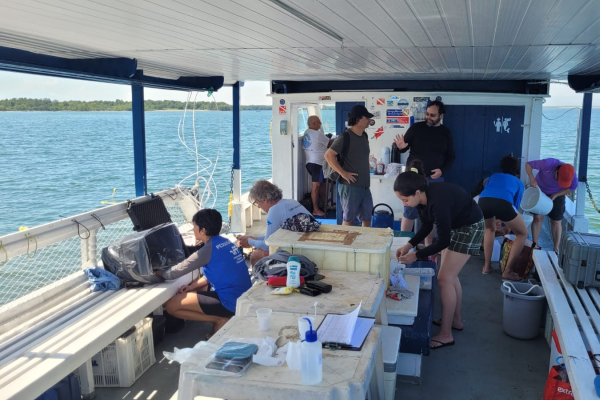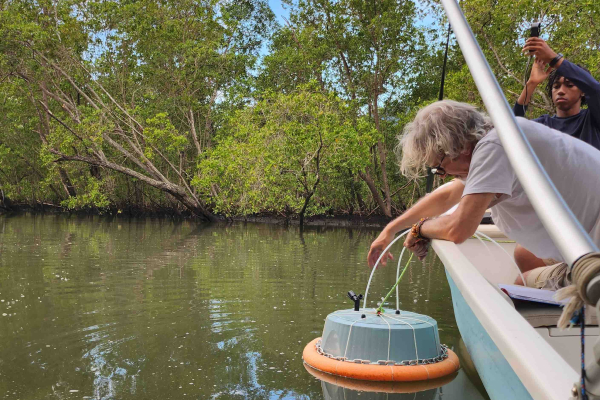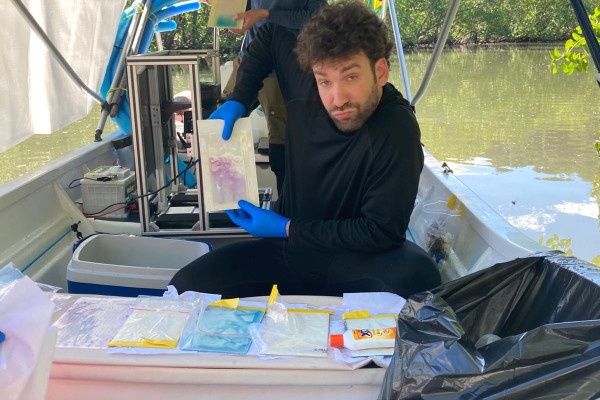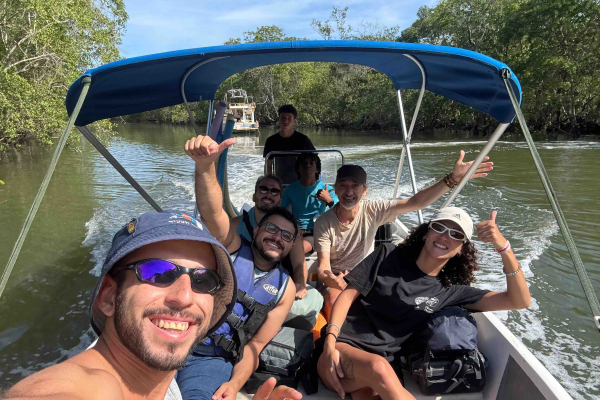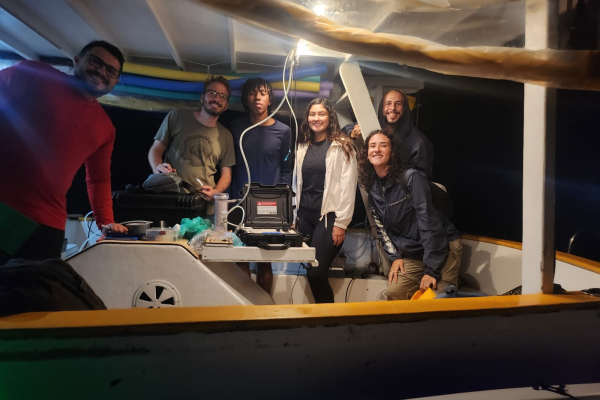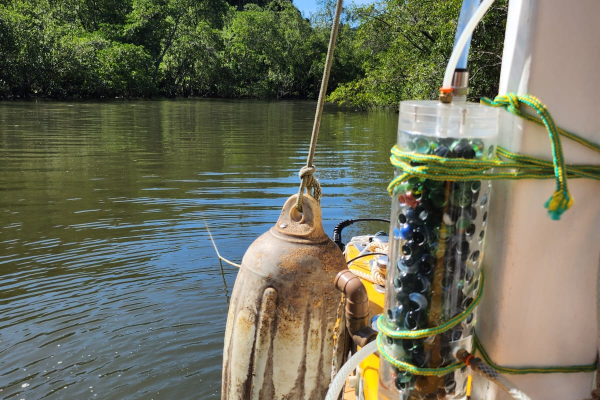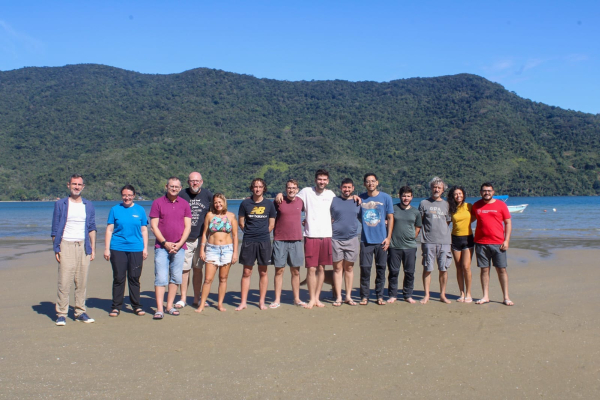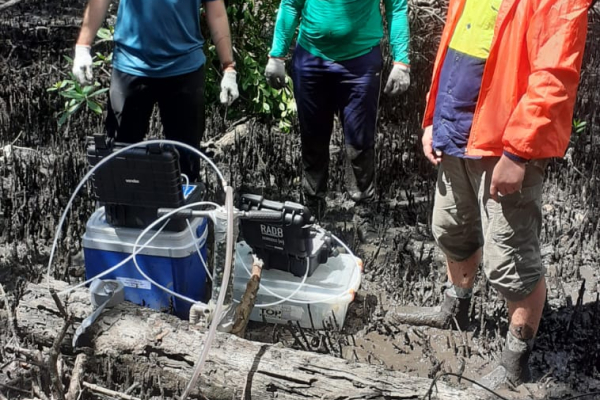TROPECOS research activities in the region of Rio de Janeiro occur in the framework of the CNRS International Research Project VELITROP in collaboration with the department of Geochemistry of the Universidade Federal Fluminense and the Faculdade de Oceanografia de Universidade do Estado de Rio de Janeiro
Monitoring pCO2 in Guanabara Bay, Rio de Janeiro (photo LC Cotovicz Jr)
The coastal region of Rio de Janeiro hosts several types of estuaries including semi-enclosed bays and lagoons with variable salinities, residence times and anthropogenic pressures. Coastal waters are characterized by a well-defined geographical gradient of eutrophication from the densely populated Guanabara Bay to Sepetiba Bay to the well-preserved Ilha Grande Bay. Urbanization has a strong impact on the coastal nutrient and carbon cycles favoring phytoplanktonic blooms that create CO2 sinks (Cotovicz et al. 2015; Abril et al. 2022)
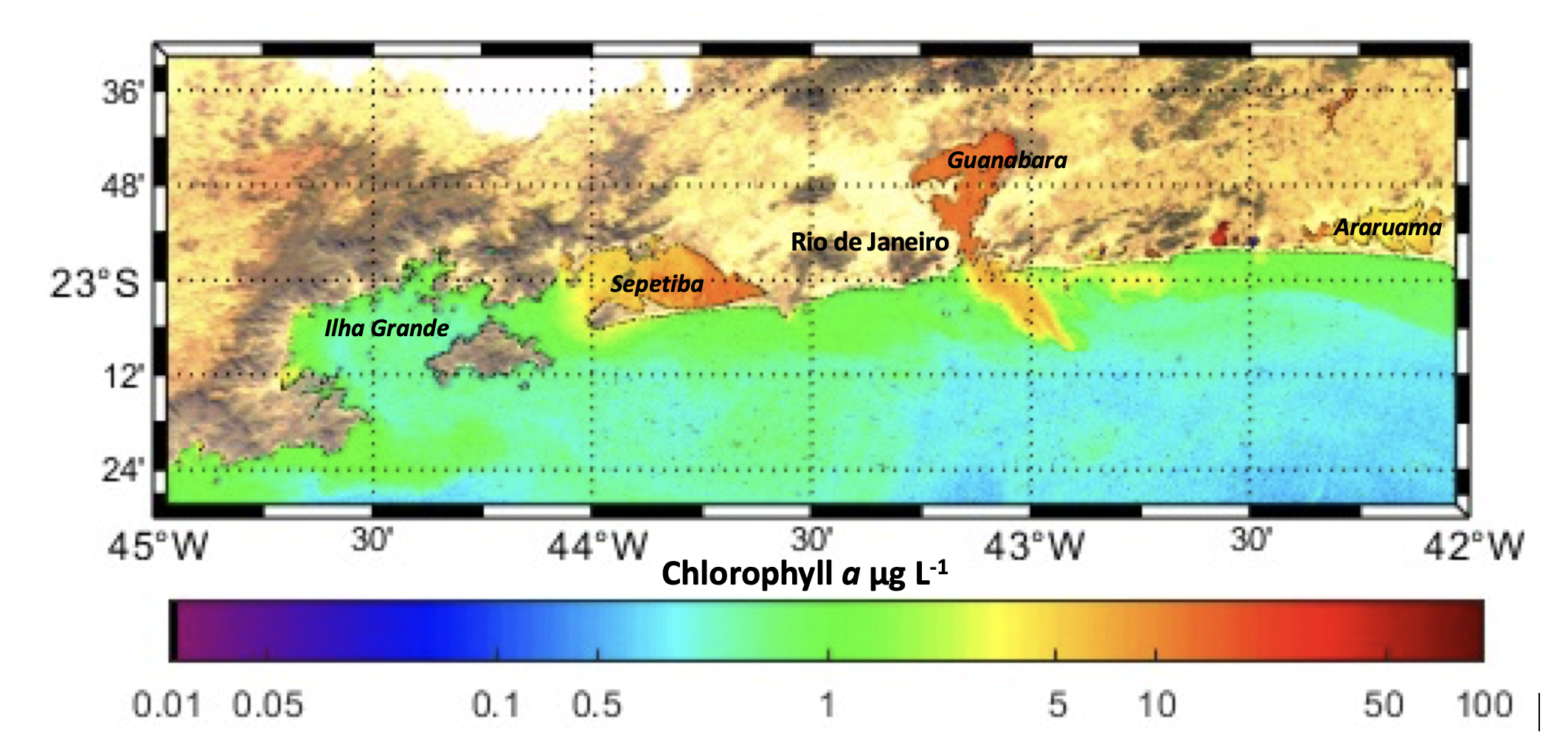
Chlorophyll a distribution in the coastal waters of Rio de Janeiro obtained from SENTINEL satellite data (V. Vantrepotte)
Mangroves are found in sheltered lagoons and bays of the region and their carbon cycle is strongly dependent on eutrophication, which impacts the intensity of CO2 fluxes (Barroso et al. 2022) and the composition of organic matter (Chynel et al. 2022).

Pristine mangrove in Saco de Mamangua, Ilha Grande Bay (photo Gwenaël Abril)
Abril G., Cotovicz Jr L.C, Nepomuceno A.M., Erbas T., Costa S., Ramos V.V., Moser G., Fernandes A., Negri E., Knoppers B.A., Brandini N., Machado W., Bernardes M., Vantrepotte V. (2022) Spreading eutrophication and changing CO2 fluxes in the tropical coastal ocean: a few lessons from Rio de Janeiro. Arquivos de Ciências do Mar, 55: 461-476, https://doi.org/10.32360/acmar.v55iEspecial.78518
Cotovicz Jr L.C., Knoppers B.A., Brandini N., Da Costa S.S.J., and Abril G. (2015) A strong CO2 sink enhanced by eutrophication in a tropical coastal embayment (Guanabara Bay, Rio de Janeiro, Brazil). Biogeosciences 12: 6125–6146. https://doi.org/10.5194/bg-12-6125-2015
Chynel M., Rockomanovic S., Abril G., Barroso G., Marotta H., Machado W., Sanders C.J., Thiney N. and Meziane T. (2022) Contrasting organic matter composition in pristine and eutrophicated mangroves revealed by fatty acids and stable isotopes (Rio de Janeiro, Brazil). Estuarine Coastal and Shelf Science. https://doi.org/10.1016/j.ecss.2022.108061.
Barroso G.C., Abril G., Machado W., Abuchacra R., Peixoto R.B., Bernardes M.C., Marques G.S., Sanders C, Oliveira G.B., Oliveira Filho S.R., and Marotta H. (2022) Linking eutrophication to carbon dioxide and methane emissions from exposed mangrove soils along an urban gradient. Science of the Total Environment 850, https://doi.org/10.1016/j.scitotenv.2022.157988.
